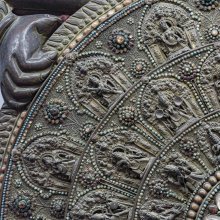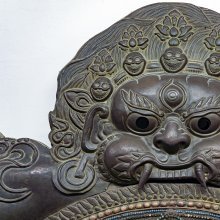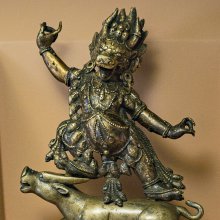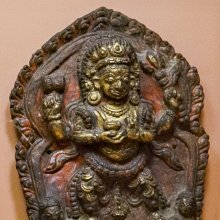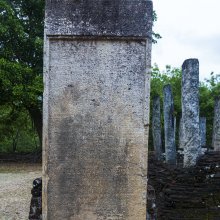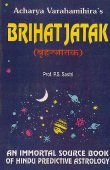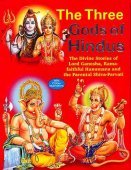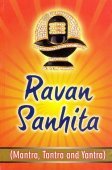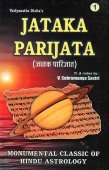Death: 3 definitions
Introduction:
Death means something in Hinduism, Sanskrit, the history of ancient India. If you want to know the exact meaning, history, etymology or English translation of this term then check out the descriptions on this page. Add your comment or reference to a book if you want to contribute to this summary article.
Images (photo gallery)
(+15 more images available)
In Hinduism
Yoga (school of philosophy)
Source: ORA: Amanaska (king of all yogas): A Critical Edition and Annotated Translation by Jason BirchDeath can be conquered, as part of the powers granted to one following certain Yoga practices, according to the Brahmayāmala-tantra (or Picumata), an early 7th century Śaiva text consisting of twelve-thousand verses.—Accordingly, [while describing a haṭha-sādhana (foreceful practice)]: “[When the Sādhaka] remains [in the hole] for up to one day, he is freed from all sins. [...] On the fourth, he is sure to see [the Yoginī,] Pūtanā, along with the Mothers. On the fifth day, in the middle of the night, he draws near the Yakṣas and Nāgas, stops the oceans, and death (mṛtyu) [no longer] exists for him. [...]”

Yoga is originally considered a branch of Hindu philosophy (astika), but both ancient and modern Yoga combine the physical, mental and spiritual. Yoga teaches various physical techniques also known as āsanas (postures), used for various purposes (eg., meditation, contemplation, relaxation).
Natyashastra (theatrics and dramaturgy)
Source: Shodhganga: Literary estimate of mudraraksasaDeath is denoted by the Sanskrit term Mṛtyu, and should be avoided on a stage (where a dramatic play is performed).—A Nāṭaka should contain pañcasandhis which indicate five successive stages of the drama. This criterion also is present in the Mudrārākṣasa. [...] In the Sāhityadarpaṇa, Viśvanātha gives a list of certain actions which should not be presented on the stage. These are [e.g., Mṛtyu (death)] [...].

Natyashastra (नाट्यशास्त्र, nāṭyaśāstra) refers to both the ancient Indian tradition (shastra) of performing arts, (natya—theatrics, drama, dance, music), as well as the name of a Sanskrit work dealing with these subjects. It also teaches the rules for composing Dramatic plays (nataka), construction and performance of Theater, and Poetic works (kavya).
India history and geography
Source: Singhi Jain Series: Ratnaprabha-suri’s Kuvalayamala-katha (history)Death was commonly depicted on the Saṃsāracakra paintings (representing scenes of human life) in ancient India, as mentioned in the Kathās (narrative poems) such as Uddyotanasūri in his 8th-century Kuvalayamālā (a Prakrit Campū, similar to Kāvya poetry).—Page 185.21 f.: Here follows a description of a printed scroll illustrating the Jaina conception of saṃsāracakra. [...] The saṃsāra-cakra illustrated the three worlds of hell, human world and the world of gods. [For example:] People suffering from many kinds of diseases like fever, pain and burning, and lying on their cots and meeting their deaths, to gather their mourning servants, wives and friends

The history of India traces the identification of countries, villages, towns and other regions of India, as well as mythology, zoology, royal dynasties, rulers, tribes, local festivities and traditions and regional languages. Ancient India enjoyed religious freedom and encourages the path of Dharma, a concept common to Buddhism, Hinduism, and Jainism.
See also (Relevant definitions)
Starts with: Death camas, Death Consciousness, Death Proximate Karma, Death rite, Deathlessness.
Ends with: Cycle of birth and death, Fear of death, Sudden death, Sweet after death.
Full-text (+5101): Marana, Mrityu, Mriti, Yama, Apamrityu, Asannakala, Mara, Antakala, Nasa, Antaka, Mahaprasthana, Maranadasha, Durmarana, Pancatva, Vipatti, Prananta, Amarana, Dehavasana, Mumursha, Dehanta.
Relevant text
Search found 508 books and stories containing Death; (plurals include: Deaths). You can also click to the full overview containing English textual excerpts. Below are direct links for the most relevant articles:
The Buddha and His Teachings (by Narada Thera)
Chapter XXVI - Modes of Birth and Death
Chapter XXV - The Wheel of Life (Paṭicca Samuppāda)
Dhammapada (Illustrated) (by Ven. Weagoda Sarada Maha Thero)
Verse 129 - The Story of a Group of Six Monks < [Chapter 10 - Daṇḍa Vagga (Punishment)]
Verse 286 - The Story of Mahādhana, a Merchant < [Chapter 20 - Magga Vagga (The Path)]
Verse 6 - The Story of Kosambi Monks < [Chapter 1 - Yamaka Vagga (Twin Verses)]
Abhidhamma in Daily Life (by Ashin Janakabhivamsa) (by Ashin Janakabhivamsa)
Cause 4 - Untimely Death < [Part 1 - The Four Causes Of Death]
Part 2 - Cases Of Untimely Death < [Chapter 8 - What happen when death draws near (mind processes immediately preceding death)]
Part 8 - Reciprocal Effect Of Bhávaná < [Chapter 7 - Kamma]
Folklore of the Santal Parganas
Chapter CLXVI - After Death < [Part V]
Chapter XXXIV - The Magic Bedstead < [Part I]
Satapatha-brahmana (by Julius Eggeling)
Kāṇḍa XIII, adhyāya 3, brāhmaṇa 5 < [Thirteenth Kāṇḍa]
Kāṇḍa VIII, adhyāya 4, brāhmaṇa 2 < [Eight Kāṇḍa]
Kāṇḍa XI, adhyāya 2, brāhmaṇa 2 < [Eleventh Kāṇḍa]
Manusmriti with the Commentary of Medhatithi (by Ganganatha Jha)
Verse 1.50 < [Section XXVII - Clumps, thickets and grasses. &c.]
Verse 5.92 < [Section IX - Other forms of Impurity]
Verse 9.216 < [Section XXVII - Property of Brothers, and their Mutual Relationship]
Related products
(+18 more products available)
